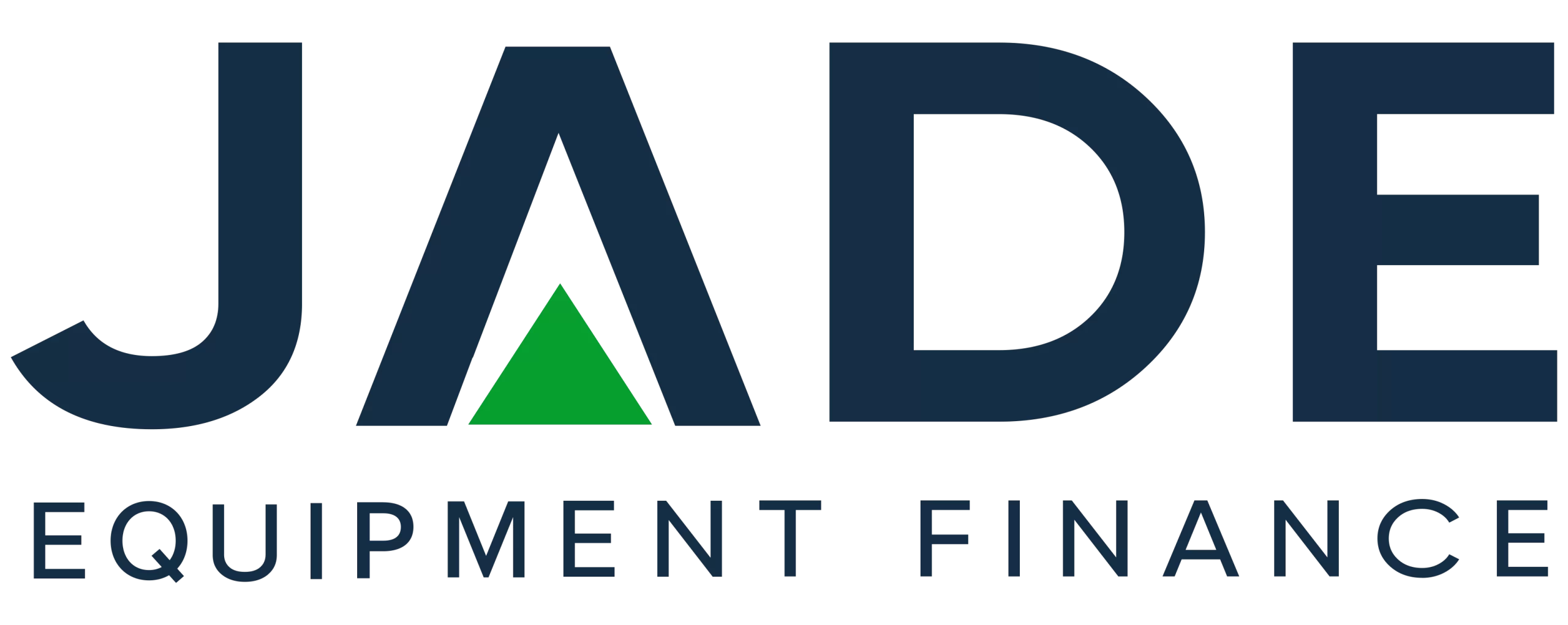Buying new equipment can have its challenges and complications - selecting which particular piece of equipment or machinery to buy, from which brand or manufacturer, sorting a deal with the dealer, working out what options will work best to deliver the outcomes you expect for your business. But we're not interfering in that process. We have confidence that you know your business and you know your stuff in that space. What you don’t want to confront is confusion and issues around your equipment finance deal. Specifically, understanding the differences between the different loans types and their individual loan elements.
The finance industry can appear to have its own dictionary when it comes to terminology. At Jade Equipment Finance, we are committed to ensuring that our truck loan customers fully understand their loan, what is involved and how to structure it to best meet their requirements. A full understanding means a fully informed decision around your investment decisions. Decisions which can be critical to your business growth.
To meet that objective, in this article we’re focussing on the terms residual, balloon and buyback. You will see them mentioned in descriptions of equipment finance with, in some cases, a presumption that everyone will know what they are. We explain what is similar and what is different between these 3 loan elements.
Loan Element Definitions
Jade Equipment Finance provides a complete portfolio of commercial finance facilities including Leasing, Commercial Hire Purchase, Rent to Own and Chattel Mortgage. As we have covered and detailed extensively in our web pages and articles, each of these finance types is suited to either cash or accruals accounting methods, individual business structures, approach to the balance sheet, income tax and treatment of GST.
So now to balloon, buyback and residual. These terms relate to these different finance facilities but essentially serve the same purpose.
- Residual: this term is used for equipment leasing contracts.
- Balloon: this term is used in reference to Chattel Mortgage and Commercial Hire Purchase deals.
- Buyback: this term relates to equipment Rent to Buy or Rent to Own finance contracts
Different names, but essentially they are the same thing. In general terms, it is the portion of the purchase price of the equipment or the overall loan amount, which is set aside for payment at a later stage. That is, it is not included when calculating the monthly repayments but due for payment at the end of the finance term.
The Purpose
The balloon/residual/buyback is usually referred to in terms of a percentage but can also be a fixed dollar figure. The key reason for including this element in an equipment finance contract is to reduce the amount payable each month in repayments. Some people also think of it as paying a deposit at the end rather than at the beginning.
Instead of making a significant outlay for a deposit on an equipment investment at time of acquisition, that amount can be set aside or deferred for payment after you’ve made all the other payments. Interest is charged on this element of the loan. It is due for payment after the last repayment is made.
Some lenders will have guidelines around how much they will permit in a balloon/residual/buyback but in many instances it is the borrower’s preference as to how much they want it to be or even if they want to include it all. With all Jade Equipment Finance deals, this is an optional element.
With many items of equipment and machinery coming with significant price tags, being able to reduce the monthly outgoings in repayments with the inclusion of a balloon/residual/buyback can be the deal-maker or breaker with some purchase decisions.
To make this element work to the best outcome for your business, consider cash flow through the life of the finance term and the anticipated value of the equipment when it comes time to pay the balloon/residual/buyback. If the amount you have to pay out is greater than the value that a lender considers the equipment is worth, you may have challenges if looking to refinance that residual.
But this element is important to equipment finance and we encourage you to use our equipment finance calculator to see exactly how it can work with your equipment purchase. Vary the balloon amount in the calculator and see how the repayments change.
When it comes to arranging your equipment finance deal, your Jade consultant will work with you and possibly your accountant if you wish, to get the balance right between balloon and repayments.
Payout it Out
At the end of your finance term comes the time to finalise payment on the balloon/residual/buyback. Depending on the finance type, that will involve negotiations with individual lender such as for rent to own. Your end of contract may involve buying out the agreement to own the equipment or giving up claim to the machinery.
With Chattel Mortgage it is more straightforward. The balloon is due to be paid on that set date and the borrower is responsible. It’s advisable to get organised a month or so ahead, call the lender for a final figure so you have the exact amount and start working on your payment.
You can consider refinancing the balloon or residual with a lease with a new equipment finance deal with Jade or making the payment via your existing cash funds.
We hope that has cleared up the differences and similarities with this terms and if you have any questions at all around equipment financing and our interest rates, please feel free to direct them to use.
For a quote on a cost-effective loan for your equipment purchase, contact Jade Equipment Finance on 1300 000 003
DISCLAIMER: YOU ARE ADVISED THAT THE INFORMATION PRESENTED HERE IN THIS BLOG, IS FOR GENERAL INFORMATION AND NOT INTENDED TO REPRESENT FINANCIAL ADVICE IN ANY WAY. IF YOU CONSIDER THAT YOU DO REQUIRE ADVICE IN REGARD TO YOUR FINANCIAL SITUATION, THEN WE RECOMMEND THAT YOU SEEK A CONSULTATION WITH A PROFESSIONAL FINANCIAL ADVISOR. NO LIABILITY IS ACCEPTED IN REGARD TO THE DETAILS OR ANY ERRORS IN THE CONTENT WHICH MAY IN PART HAVE BEEN SOURCED FROM A RANGE OF SOURCES.


